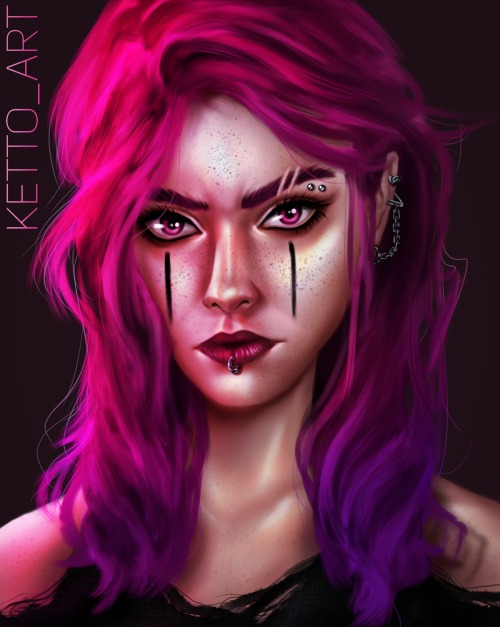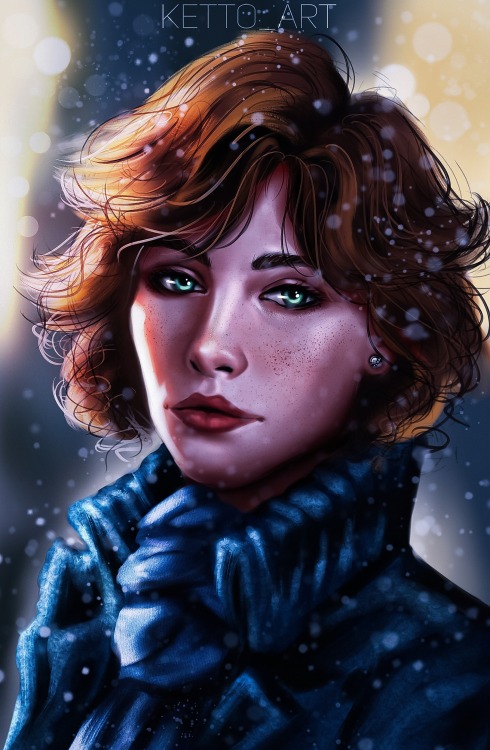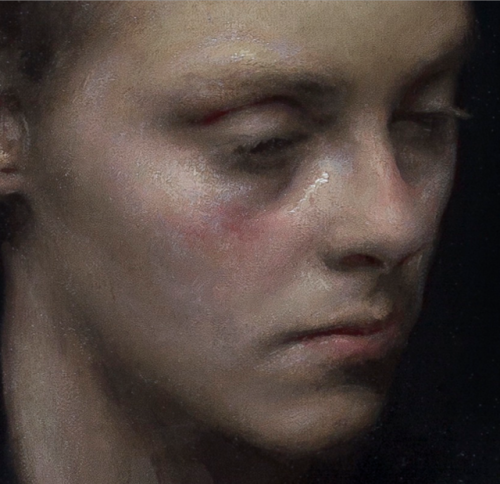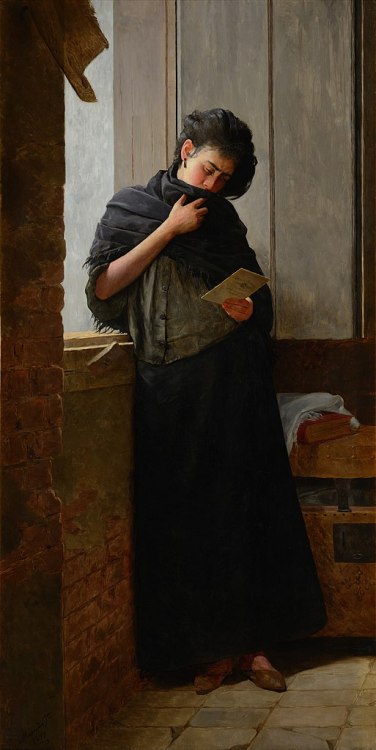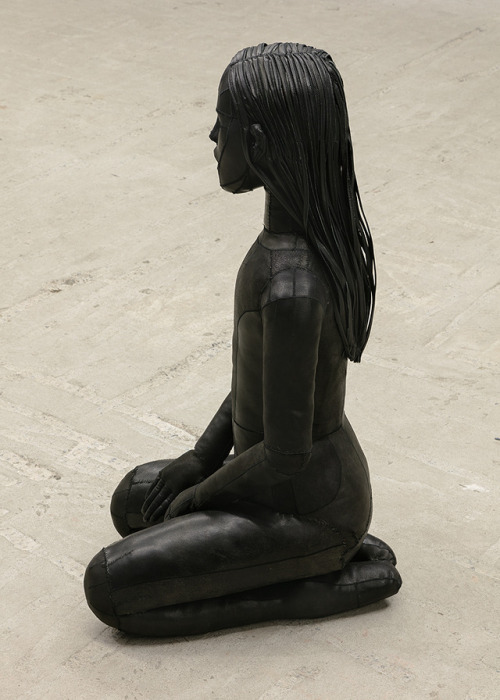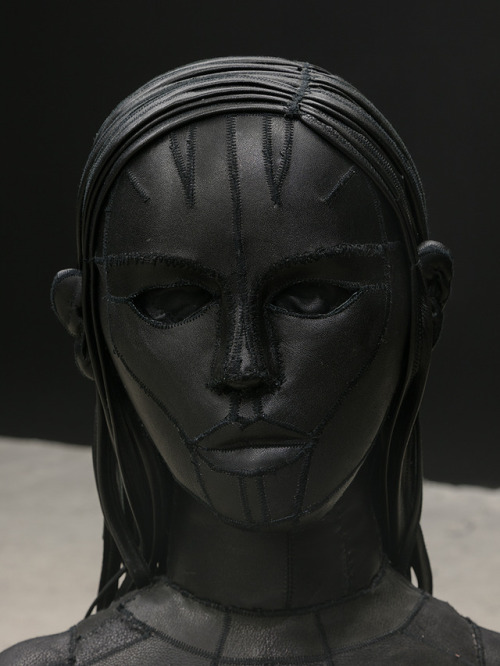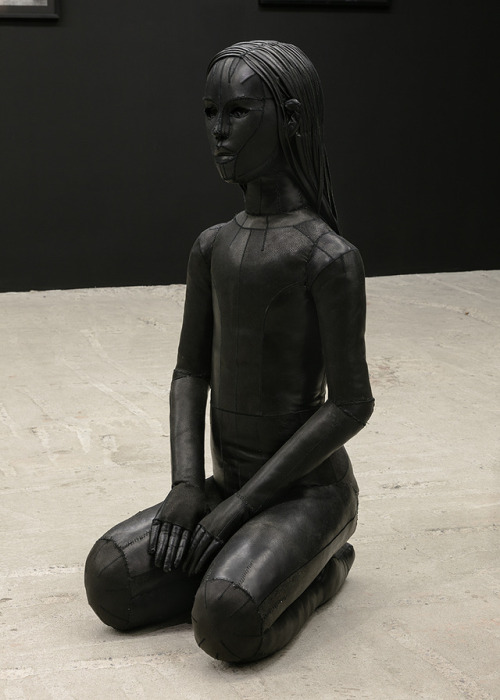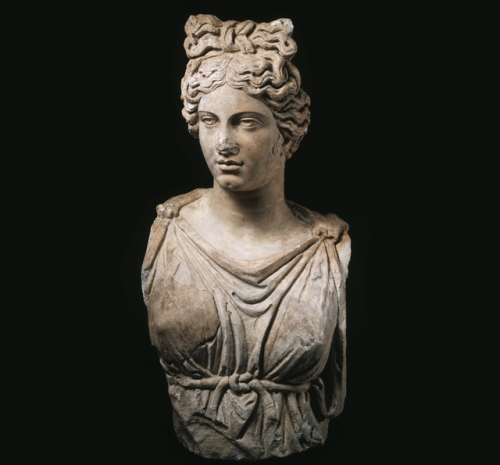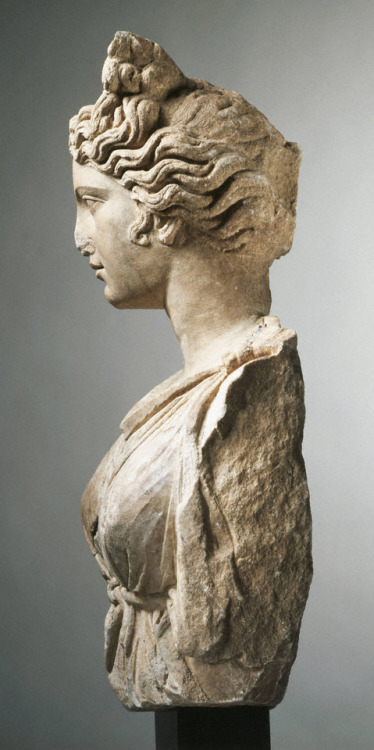#female portraits
Jacques-Emile Blanche—Julia Stephen,1889.
The French artist Jacques-Emile Blanche painted this portrait after a photograph of Julia Stephen taken by her aunt, Julia Margaret Cameron (the celebrated photographer and Pre-Raphaelite model), between 1864and1867. The sitter is famous in her own right for being the mother of writer Virginia Woolf, painter Vanessa Bell, and the founder of the Bloomsbury group, Thoby Stephen.
Post link
Denise Marts—Femme au chapeau rouge,2017.
In the artist’s words:
Before I was an artist I was an aspiring clothing designer many years ago. Fashion design slipped into the background as art came to the fore. My longstanding interest in fashion began to return in 2013. This portrait, “Femme au Chapeau Rouge” is a reflection of that and of my interest in photography as well. I recently opened a small photography studio where I took the photo from which this work was created.
“Femme au Chapeau Rouge” was born earlier than expected. I expected to labor long with this idea in the form of a painting but instead she popped out unexpectedly as a digitally manipulated photograph. It is the first formal work of 2017. I think of myself as a neo-modernist artist because I identify so heavily with the European early modern masters. In that respect I see this piece as strongly reflecting a combination of neo-pointilist, neo-cubist and neo-impressionist elements as well as, of course, Mademoiselle Chanel. Source: Saatchi
Post link
Almeida Júnior—Saudade,1899.
Saudade is an untranslatable Portuguese word. First attested in the late 13th century, saudade today connotes a melancholic feeling of incompleteness, wishful longing for wholeness, desire for presence as opposed to absence, yearning for the return of what has gone, such as experiences and pleasures once lived.
Post link
Aneta Grzeszykowska—Untitled (Skin Doll),2016.
Post link
Frank Auerbach—Head of E.O.W.,1957.
‘E.O.W.’ - Estella (Stella) West - began posing regularly for Auerbach in the early 1950s, and continued to do so until 1973. By then he had completed about 80 drawings and paintings of her.
Post link
Roman (Antonine Period) — Colossal Bust of a Goddess or Personification,160-190 AD.
Post link
Walter Fryer Stocks—Mrs. Fanny Eaton,1859-60.
This captivating portrait drawing of the mixed-race model Fanny Eaton captures a quintessential feature of Pre-Raphaelitism: iconic representations of female beauty. Founded in 1848 by a group of young British painters—most notably William Holman Hunt, John Everett Millais, and Dante Gabriel Rossetti—this avant-garde movement challenged the academic tradition in its quest for what the contemporary art critic John Ruskin called “absolute, uncompromising truth,” paradoxically combining modern realism with a nostalgic passion for medieval painting and literature. Although the group disbanded by 1853, it had a transformative effect on Victorian art through the late nineteenth century, inspiring generations of academically trained artists, including Walter Fryer Stocks, who established himself as a landscape watercolorist by the early 1860s. As a teenager, he may have belonged to the same London sketching club that was formed by the figurative painter Simeon Solomon, by whom there are several studies of Fanny Eaton that are dated November 1859.
Born Fanny Antwistle in Jamaica in 1835 to a former slave, Matilda Foster, and an unknown father, Eaton settled in Britain with her mother in the 1840s, taking up work as a housecleaner and cook before she began modeling for the Pre-Raphaelites around the time of this drawing, made when she would have been in her early twenties. She married James Eaton, a cab and coach driver, in 1857, and they had ten children between 1860and1879. After her husband died in 1881, Eaton continued to support her family as a housekeeper and dressmaker—having stopped modeling by 1868—and lived until 1924. Eaton, whose identity has only recently been established, also appeared in paintings and drawings by many of the Pre-Raphaelite painters, including Dante Gabriel Rossetti, who described her in a letter of August 1865 as “having a very fine head and figure—a good deal of Janey”—an allusion to his muse and mistress Jane Morris. Although Eaton shared working-class origins with most of the Pre-Raphaelite “stunners” (as the models were called), her lack of romantic entanglements with any of the male artists set her at a professional remove from supermodels Morris, Fanny Cornforth, Annie Miller, and Elizabeth Siddal.
By comparison with these Caucasian British models, whose identities are often interchangeable with the literary heroines—such as Shakespeare’s Ophelia and Dante’s Beatrice—whom they portray, Eaton usually appears as a peripheral and anonymous figure in a range of biblical,genre, and literary paintings; her distinctive features allowed the Pre-Raphaelites to adapt what they considered to be her exotic beauty to a variety of ethnic types—ranging from Hebrew to African. In a few instances she is the sole protagonist, most notably in Albert Moore’s Mother of Sisera(1861) and in Joanna Mary Boyce’s unfinished and subsequently destroyed Sibyl(1861), for which there is a related small oil sketch of Eaton’s head in profile (Yale Center for British Art). In this highly finished drawing of Eaton, Stocks applies a meticulous stippled chalk technique to expressive effect, conveying an alluring and introspective sensuality—synonymous with Pre-Raphaelite femininity—in the sitter’s asymmetrical glance and parted lips.Laura M. Giles, Curator of Prints and Drawings, Princeton University Art Museum
Post link


